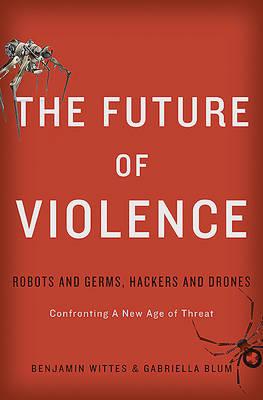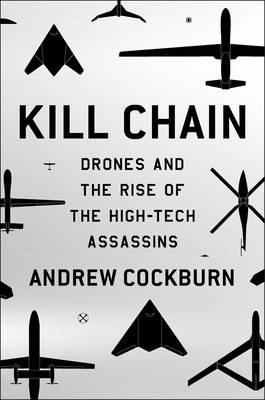Tag drone warfare
The Future of Violence: Robots and Germs, Hackers and Drones, Confronting A New Age of Threat, by security experts Benjamin Wittes and Gabriella Blum of the Brookings Institute and Harvard University Law School respectively, brings the reader into a very Brave New World. With the creation of everything from microdot surveillance instruments to swarm cameras to insect sized flying robotic weapons to viruses which can be manipulated by ordinary citizens and unleashed on entire cities to goggles, due to be commercialized by the end of 2015, which will allow an individual to be able to see in real time what is happening anywhere from the top of Mount Everest to Times Square, the future has already arrived. That in an era where a medieval-style holy war is also raging, the potential dangers of the rapid evolution of technology are all too painfully evident. Wittes and Blum begin their introduction to The Future of Violence with the scenario of a robotic drone spreading anthrax. But there are even more frightening scenarios: “We built walls around our countries with legal concepts such as jurisdiction. And for the most part, these intellectual, conceptual and legal constructions have held up pretty well. Yes, we had to adjust in response to al-Qaeda and other transnational nonstate actors. And yes, globalization has complicated the discussion. But the way we think about security–what it means, where it comes from, what threatens it, what protects it, and the relationship between individual and societal security–has remained remarkably stable… This way of thinking is now out of date… The fabric of society and its governance is based on dated assumptions about a technological world that no longer exists.”
From his first days as commander in chief, the drone has been President Barack Obama’s weapon of choice, used by the military and the CIA to hunt down and kill the people his administration has deemed — through secretive processes, without indictment or trial — worthy of execution. There has been intense focus on the technology of remote killing, but that often serves as a surrogate for what should be a broader examination of the state’s power over life and death. The cutting edge journalistic team at The Intercept expose the shocking dystopian powers the United States and President Obama in particular have so roundly abused. The Democratic president, they say, has gotten away with crimes and repressive policies that liberals never would have let a Republican carry out. In 2015 alone, the U.S. dropped at least 23,144 bombs on six Muslim-majority countries, many in which it has not officially declared war. Among the many revelations in the book is that during a five-month period in a U.S. program in northeastern Afghanistan called Operation Haymaker, almost 90 percent of people killed in drone strikes were not the intended targets.
Kill Chain: Drones and the Rise of High-Tech Assassins explores a subject of deep and enduring fascination, assassination by drones. It is a page-turning narrative on the history of drone warfare by the acclaimed author of Rumsfeld, exploring how this practice emerged, who made it happen, and the real consequences of targeted killing
In his new book A Theory of the Drone moral philosopher Gregoire Chamayou describes the killer drone as “a dream of a weapon” resulting in confrontation without combat, no prisoners and no sure expectation of victory. It is essential reading for anyone wanting to understand the rise of Islamic State aka ISIS and the West’s disastrous, counterproductive responses to the rise of Islamic fundamentalism sweeping the world. Drone warfare has raised profound moral, ethical and legal questions. Not since debates over nuclear warfare has an American military strategy been the subject of such worldwide concern over the development of increasingly inhumane forms of warfare.



